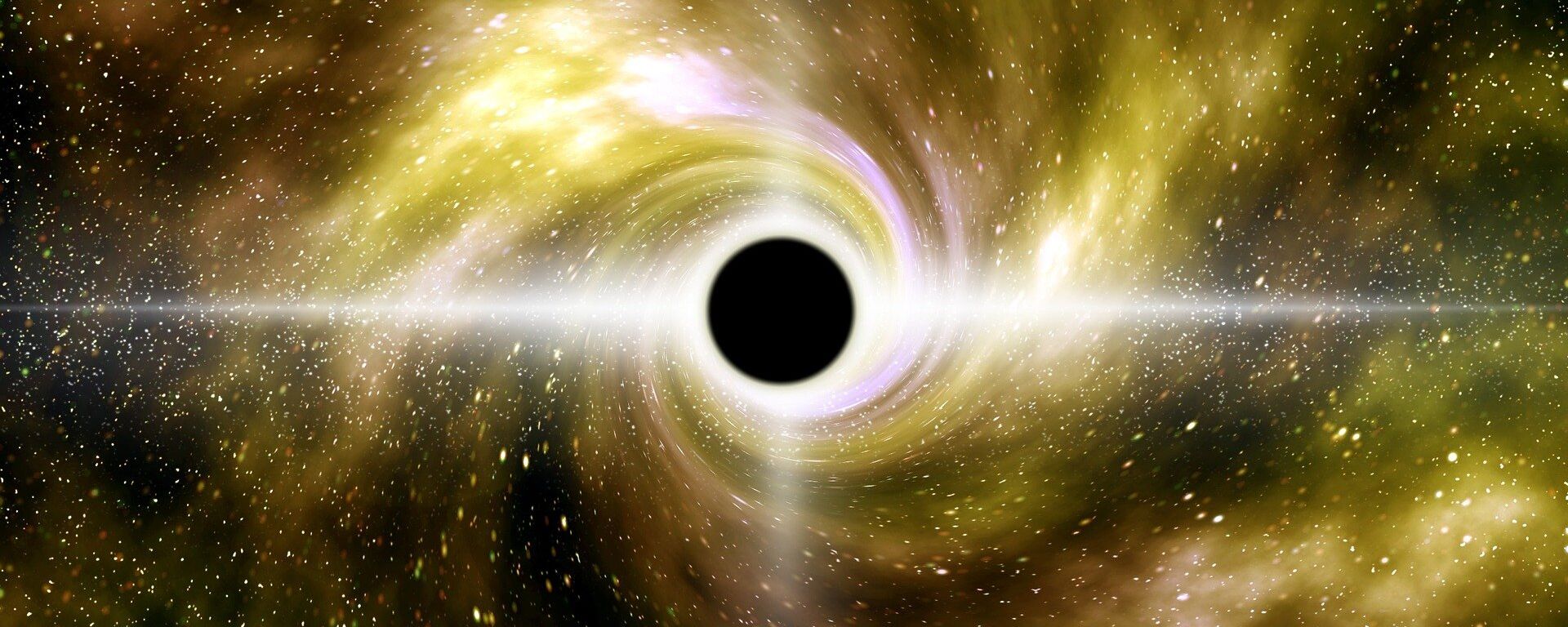https://sputnikglobe.com/20220125/the-one-percent-rough-number-of-stellar-mass-black-holes-in-universe-estimated-by-scientists-1092503968.html
The One Percent: Rough Number of Stellar-Mass Black Holes in Universe Estimated by Scientists
The One Percent: Rough Number of Stellar-Mass Black Holes in Universe Estimated by Scientists
Sputnik International
Instead of chasing down each and every black hole out there, the researchers focused their attention instead on how these objects come into existence. 25.01.2022, Sputnik International
2022-01-25T11:56+0000
2022-01-25T11:56+0000
2022-01-25T11:56+0000
science & tech
study
number
black hole
https://cdn1.img.sputnikglobe.com/img/107692/61/1076926117_0:100:1921:1180_1920x0_80_0_0_7be7807b95b643454136930be7ef5bf4.jpg
While massive and enigmatic celestial bodies known as black holes are not exactly easy to detect, in no small part due to their propensity to swallow light, scientists have managed to estimate the approximate number of a particular kind of these objects in the universe.Rather than try and spot these objects, a team of researchers have come up with a new method that involves tracking stars' evolution and determining how often they turn into black holes, according to space.com.These findings may potentially help scientists gain further insight into the supermassive black holes, which come into being from the merger of smaller, stellar-mass black holes.
https://sputnikglobe.com/20211202/massive-black-hole-about-as-massive-as-the-milky-ways-found-in-tiny-galaxy-1091210150.html
Sputnik International
feedback@sputniknews.com
+74956456601
MIA „Rossiya Segodnya“
2022
News
en_EN
Sputnik International
feedback@sputniknews.com
+74956456601
MIA „Rossiya Segodnya“
Sputnik International
feedback@sputniknews.com
+74956456601
MIA „Rossiya Segodnya“
science & tech, study, number, black hole
science & tech, study, number, black hole
The One Percent: Rough Number of Stellar-Mass Black Holes in Universe Estimated by Scientists
Instead of chasing down each and every black hole out there, the researchers focused their attention instead on how these objects come into existence.
While massive and enigmatic celestial bodies known as black holes are not exactly easy to detect, in no small part due to their propensity to swallow light, scientists have managed to estimate the approximate number of a particular kind of these objects in the universe.
Rather than try and spot these objects, a team of researchers have come up with a new method that involves tracking stars' evolution and determining how often they turn into black holes, according to space.com.
Using this method, the team estimated that there are about 40 quintillion stellar-mass black holes – that is, black holes whose mass is roughly five to ten times that of the Sun – out there, comprising about one percent of all “normal matter”, as the media outlet puts it.
These findings may potentially help scientists gain further insight into the supermassive black holes, which come into being from the merger of smaller, stellar-mass black holes.

2 December 2021, 19:30 GMT
"Our work provides a robust theory for the generation of light seeds for supermassive black holes at high redshift [further back in time], and can constitute a starting point to investigate the origin of "heavy seeds", that we will pursue in a forthcoming paper,"said Lumen Boco, an astrophysicist at the International School of Advanced Studies in Trieste.


